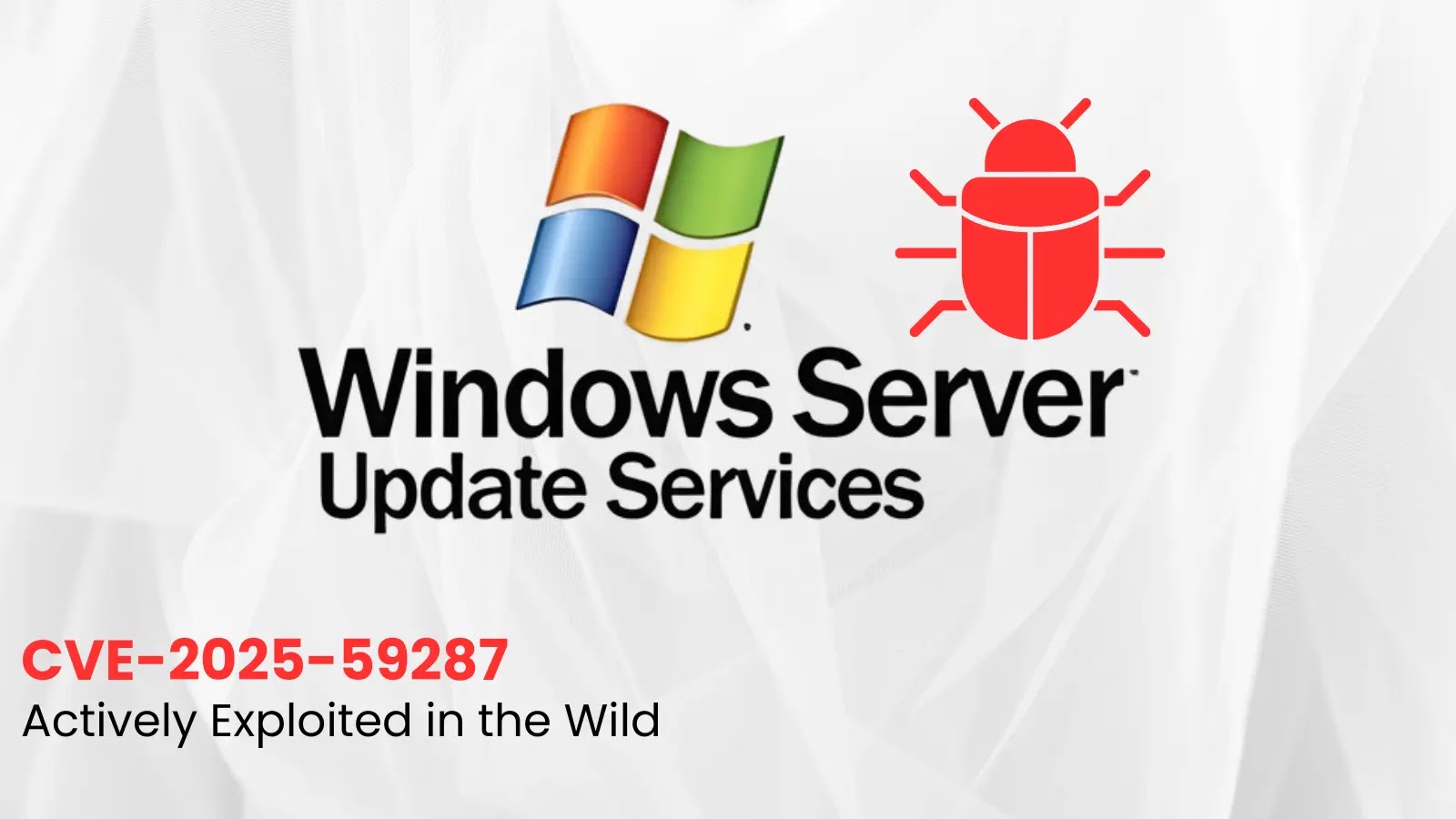
CISA Warns of Hackers Actively Exploiting Windows Server Update Services RCE Vulnerability in the Wild
CISA Sounds the Alarm: Critical WSUS RCE Vulnerability Under Active Attack
The digital threat landscape is perpetually shifting, and staying ahead of malicious actors requires constant vigilance. A recent and particularly urgent warning from the U.S. Cybersecurity and Infrastructure Security Agency (CISA) underscores this reality. Organizations worldwide are now on high alert due to active exploitation of a severe remote code execution (RCE) vulnerability within Microsoft’s Windows Server Update Services (WSUS).
This isn’t a theoretical risk; attackers are actively leveraging this flaw, making immediate attention and remediation paramount for any entity relying on WSUS for patch management. Ignoring this warning could lead to catastrophic compromises, data breaches, and significant operational disruption.
Understanding the Threat: CVE-2025-59287
The vulnerability in question is tracked as CVE-2025-59287. With a staggering CVSS score of 9.8, this flaw represents an extreme risk. Its severity stems from its potential for unauthenticated attackers to execute arbitrary code with system-level privileges across a network. In practical terms, this means an attacker could gain complete control over affected WSUS servers and potentially use them as launchpads to infiltrate and compromise wider swathes of an organization’s network infrastructure.
Windows Server Update Services (WSUS) is a critical component for many enterprises, facilitating the centralized management and distribution of updates for Microsoft products to computers in a network. Its pervasive use makes any high-severity vulnerability a prime target for attackers, as compromising a WSUS server grants a strategic foothold into numerous interconnected systems.
The Mechanics of Exploitation
While specific technical details of the active exploits are often kept under wraps to prevent further weaponization, the nature of a “Remote Code Execution” (RCE) vulnerability with system-level privileges means attackers can remotely inject and execute their own code. For WSUS, this could involve manipulating update packages, server-client communications, or internal WSUS processes. Such an attack could lead to:
- System Compromise: Full control over the WSUS server.
- Malware Distribution: Using the compromised WSUS server to push malicious updates or software to clients.
- Network Lateral Movement: Establishing persistence and expanding control within the network.
- Data Exfiltration: Stealing sensitive information from the compromised server or connected systems.
The “unauthenticated” aspect is particularly concerning, as it implies attackers do not need valid credentials to initiate the attack, dramatically lowering the bar for exploitation.
Remediation Actions: Securing Your WSUS Environment
Given the active exploitation, immediate action is not just recommended, but absolutely essential. Organizations must prioritize the following steps:
- Apply Patches Immediately: Monitor Microsoft’s official channels for security updates addressing CVE-2025-59287. Once available, deploy them to all WSUS servers without delay. Ensure proper testing in a staging environment if possible, but do not allow testing protocols to unduly delay critical security patching.
- Network Segmentation: Isolate WSUS servers from critical internal networks where possible. Restrict communication to only necessary ports and services. This can limit the blast radius if a compromise occurs.
- Least Privilege: Ensure WSUS servers operate with the absolute minimum necessary privileges. Review service accounts and administrative access to prevent privilege escalation.
- Strong Authentication: Implement multi-factor authentication (MFA) for all administrative interfaces accessing WSUS servers.
- Monitor Logs: Regularly review WSUS server logs for unusual activity, failed login attempts, or suspicious update deployments. Integrate WSUS logs with a Security Information and Event Management (SIEM) system for centralized monitoring and anomaly detection.
- Endpoint Protection: Ensure all endpoints managed by WSUS have up-to-date antivirus and endpoint detection and response (EDR) solutions capable of detecting and blocking malicious activity.
- Vulnerability Scanning: Conduct regular vulnerability scans of your network and WSUS servers to identify misconfigurations or unpatched systems.
Tools for Detection and Mitigation
Leveraging appropriate tools is vital for identifying vulnerabilities and ensuring effective remediation. Below is a table of general categories and examples of tools that can assist in securing your WSUS environment against threats like CVE-2025-59287.
| Tool Name/Category | Purpose | Link (Example) |
|---|---|---|
| Vulnerability Scanners (e.g., Nessus, Qualys, OpenVAS) | Detect unpatched systems, misconfigurations, and known vulnerabilities like CVEs. | Tenable Nessus |
| Endpoint Detection and Response (EDR) (e.g., CrowdStrike, SentinelOne) | Monitor endpoint activity for suspicious behavior, detect malware, and respond to incidents. | CrowdStrike |
| Security Information and Event Management (SIEM) (e.g., Splunk, Microsoft Sentinel) | Centralize log collection, monitor for security events, and facilitate incident response. | Splunk |
| Network Intrusion Detection/Prevention Systems (NIDS/NIPS) | Monitor network traffic for malicious activity and block known attack patterns. | Snort |
| Microsoft Baseline Security Analyzer (MBSA) – legacy, replaced by others | (Historically) Scanned for common security misconfigurations; now largely superseded by modern vulnerability assessment tools and SCCM. | N/A (Deprecated) |
Prioritizing Your Security Posture
The CISA warning regarding CVE-2025-59287 is a stark reminder that even foundational services like WSUS can become critical attack vectors. Proactive patching, rigorous monitoring, and robust security practices are not optional in today’s interconnected environment. Organizations must act decisively to protect their infrastructure from this actively exploited RCE vulnerability, safeguarding their operations and the data they manage.





